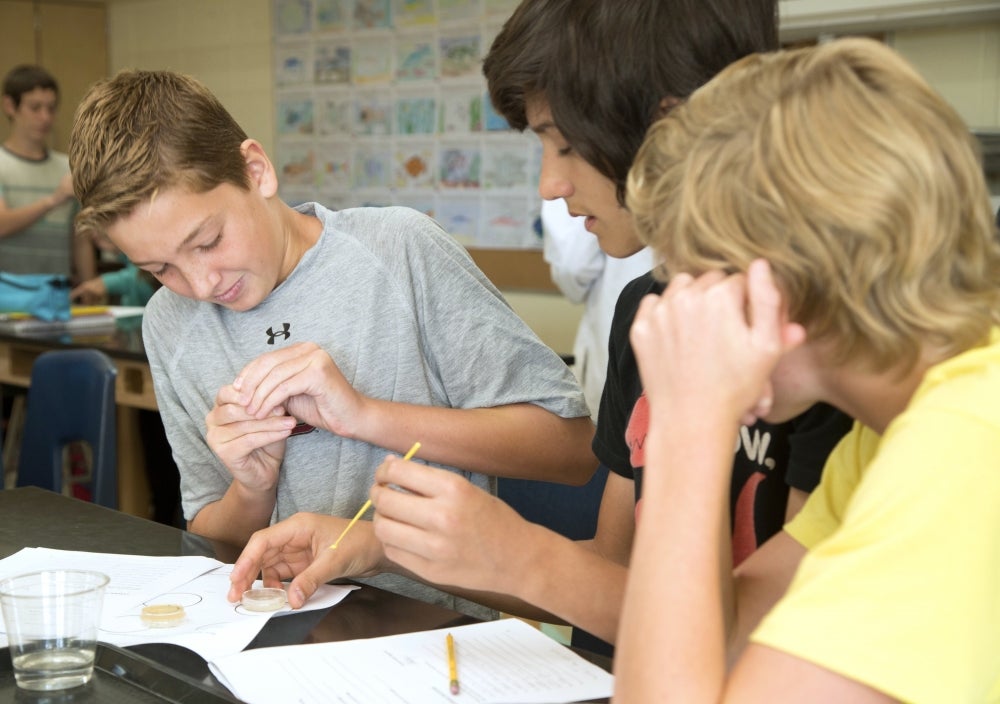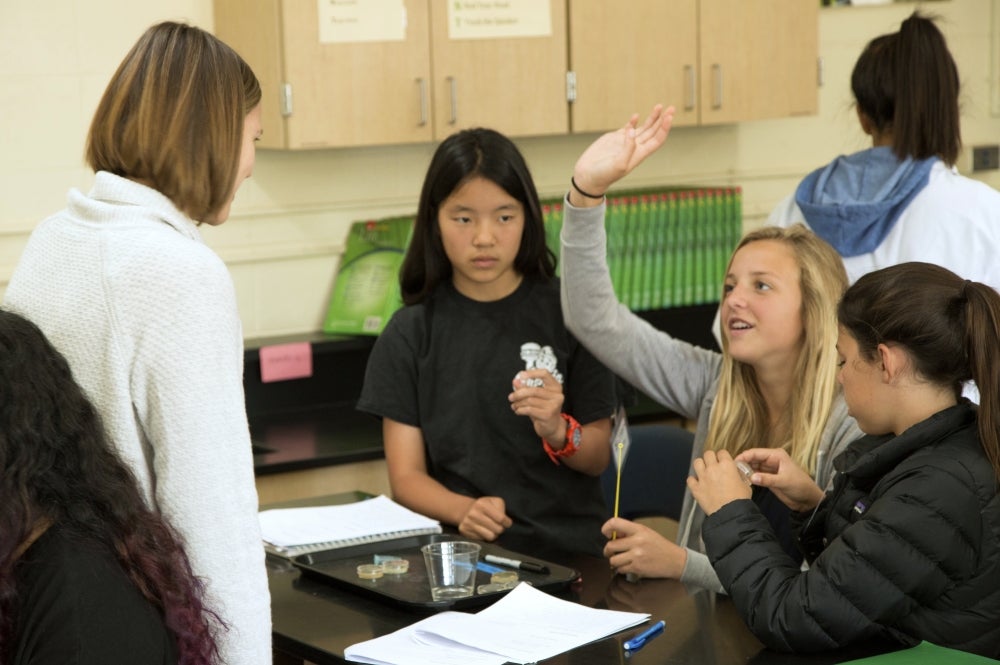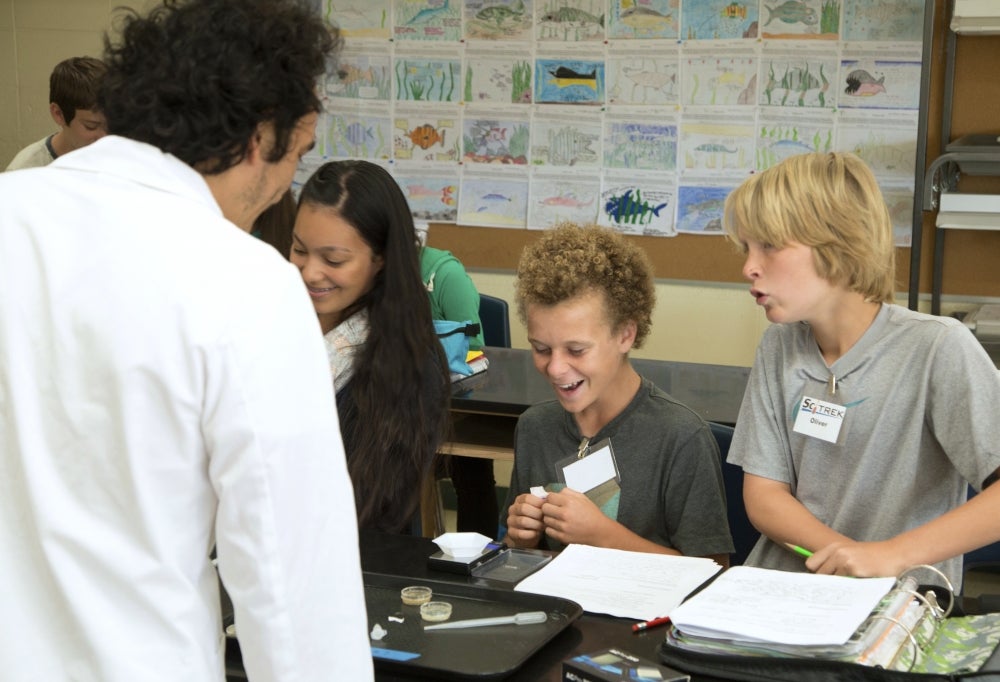The Gift of Exploration



SciTrek, an experimental science program founded by UC Santa Barbara chemistry professor Norbert Reich, has “graduated.”
After four years of bringing the program based on the scientific process to the elementary classrooms of Goleta and Santa Barbara with the help of chemistry lecturer Darby Feldwinn, SciTrek is now a part of the curriculum for the majority of students at La Colina Junior High School. Under the guidance of the school’s science teachers and SciTrek volunteers, seventh-graders are able to discover how science works firsthand by carrying out their own experiments.
“My students designed experiments to see how a substance like sugar or environmental changes such as temperature or exposure to light affect yeast growth positively or negatively,” explained Megan Cotich, a science teacher at La Colina in Santa Barbara whose classes participated in SciTrek’s Evolving Germs module. “They worked with E. coli bacteria, which is a material I wouldn’t be able to use on my own with 30 students.”
SciTrek partners with local schools to present inquiry-based units that emphasize specific grade level standards. Each module addresses a specific next-generation science standard and teaches students how scientists use evidence-based explanations to understand the world around them.
“SciTrek promotes the synergies between science inquiry, language arts and California standards,” Reich said. “Our focus is showing how reading and writing benefit when embedded in an inquiry-based science setting.”
Last fall, 10 seventh-grade science classes at La Colina completed a module called the Best Bread Company — in effect, a competition to produce yeast with the highest level of carbon dioxide. “It was really neat to see students thinking critically, working as a team because they had to optimize the results of various experiments,” Cotich said. “Through their teamwork, they were able to improve their procedures each day, ultimately deciding on a final protocol to follow on competition day.
“This was also a great project for students in an at-level class because they’re being exposed to a lot of high-level science,” she added. “It really gives them the opportunity to have experiences that they might not traditionally get in a college prep setting because they have the extra scaffolding with the UCSB SciTrek volunteers.”
Evolving Germs not only built on some of the lessons learned in the Best Bread Company module but also fit well with the classes’ current curriculum: cell biology, evolution and microbes. SciTrek modules follow a linear progression that involves initial observations, generation of questions, design of experiments to address a question, execution of experiments, data collection and analysis, and the presentation of results to peers.
“SciTrek is a great opportunity for our students because with a 1:30 ratio in a single classroom, I’m not able to give the type of hands-on experience with the materials SciTrek provides for us,” Cotich said. “So not only do they supply the materials, they also provide UCSB graduate or undergraduate science student volunteers who have the special skills and knowledge to guide our students through their own inquiries.”
Most SciTrek volunteers are science majors who are trained to deliver the program and work with children. “In school, you’re usually taught science in a way that requires you to memorize the facts and regurgitate the information,” said SciTrek organizer Erin Morgan, a second-year graduate student in the Department of Chemistry and Biochemistry. “With SciTrek, students are able to get really engaged. I think they really learn about how experiments work, how science works, and that enables the mind to grow in a different way.”
SciTrek programs assess students to see if their critical thinking and science practices improve. For the program at La Colina, preliminary assessment results showed that students who participated in the program scored 27 percent higher than students who did not. “This is very significant, much greater than is typically seen with education programs over such a short period of time,” Reich said.
“The future of SciTrek would be a sustainable program that reaches out to any teacher and classroom in the Santa Barbara-Ventura area and is then demonstrated to be effective,” he added. “That could become the basis for a program that can be expanded anywhere in the state because one of the key features of the program is access to university and college science students. There are lots of junior colleges, California state universities and UCs that could easily implement the SciTrek program down the road.”
This year’s SciTrek programs were supported by UC Santa Barbara, the California Subject Matter Project, the Karisma Foundation, the Camille & Henry Dreyfus Foundation, Wyatt Technology, the National Science Foundation Center for the Sustainable Use of Renewable Feedstocks (CenSURF) and the American Society for Biochemistry and Molecular Biology.



